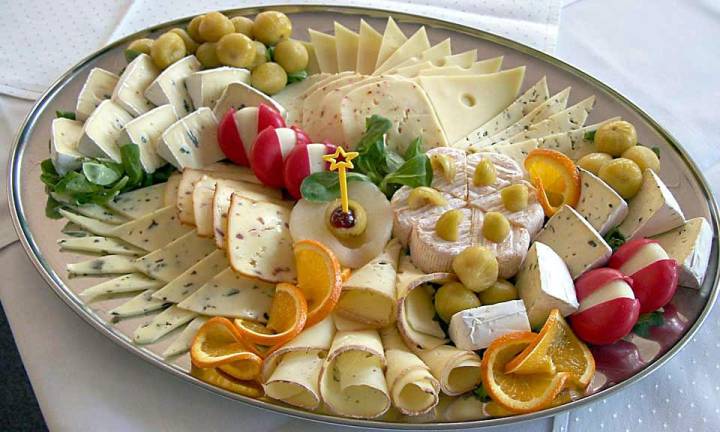If Fed a Cheedar, Maybe Ya Won’t Getta Cavity

Cheese lovers of the world, unite! You have nothing to lose but your cavities.
Cavities and tooth decay are among the world’s most common health problems triggered by streptococcus bacteria that live naturally in your mouth, feasting on the sugars on your teeth and excreting acids that eat away at tooth enamel, as the Mayo clinic noted recently.
Today, a bevy of food experts want you to know that eating cheese seems to undercut the process. Exactly how cheese works its dental magic has been the subject of research for more than 20 years.
One possibility is that casein, the protein in cheese, coats teeth with a protective film that helps fend off acid that would normally attach to the enamel. A second possibility is that eating cheese increases the flow of saliva which may actually wash the bad bugs away. A third is that the protein and calcium in cheese may either slow the loss of minerals from the tooth surface or even add a new layer of protection.
That’s no surprise when you consider that a single ounce of some cheeses serves up at least 15 percent of the USDA’s 1,300 mg RDA for healthy adults. Think Monterrey Jack (200 mg calcium per ounce), Cheddar (201 mg per ounce), Gruyere (250 mg per ounce), Swiss (250 mg per ounce), and Hard Parmesan (325 mg per ounce).
Even more intriguing is the possibility is that the lactobacilli (bacteria natural to milks) in cheese may be antibiotics. More than 20 years ago, a team of Swedish, Dutch and Brits at Karolinska Institute in Stockholm found that feeding souped up lactobacilli to lab rats reduced the number of bad bugs in their mouths, thus lowering the risk of cavities. Last year, at the American Society for Microbiology (ASM) Microbe conference, researchers from Howard University, followed up with promising data suggesting that some lactobacilli in cheese and yogurt appear actively to inhibit at least 14 previously multidrug-resistant bacteria. That’s a big deal for humans at every age from infancy (who wants cavities in baby teeth?) to senior citizens at higher risk of cavities on tooth roots exposed by receding gyms.
As the Howard scientists told interviewers, given the continuing evolution of harmful bacteria impervious to current antibiotics, that’s a really big deal because “many procedures executed by clinicians could become obsolete as they involve administration of antibiotics to which there is an upsurge of resistance. It is therefore imperative that we accelerate the effort to find novel antimicrobial agents in order to be ahead of the game, otherwise, it is foreseeable that the strides we have made so far to control microbial infections might be negated by the accelerated evolution of the so-called superbugs.”
Finally, last September a team of Chinese and American nutritionists published a meta-analysis in Advances in Nutrition, 2023 reporting that “evidence was observed for inverse associations of cheese consumption with all-cause and cardiovascular mortality, incident CVD, CHD, and stroke, and for null associations with cancer mortality, incident hypertension and prostate cancer.” Translation: According to Dr. Moises Torres-Gonzalez, director of nutrition research at the National Dairy Council, eating cheese has “benefits for human health.” Best of all, that works even for people sensitive to lactose, the natural sugar in milk, because most aged cheeses contain little to no lactose. If the Nutrition Facts panel on the package shows zero grams of sugar per serving, then lactose content will be in the acceptable range for most consumers.
No wonder food scientist Sharon Gerdes, longtime contributor to dairy-foods.com, wants you to know that her afternoon snack is a slice of string cheese and an apple.
So if you fancy cheese, you have cause to smile.